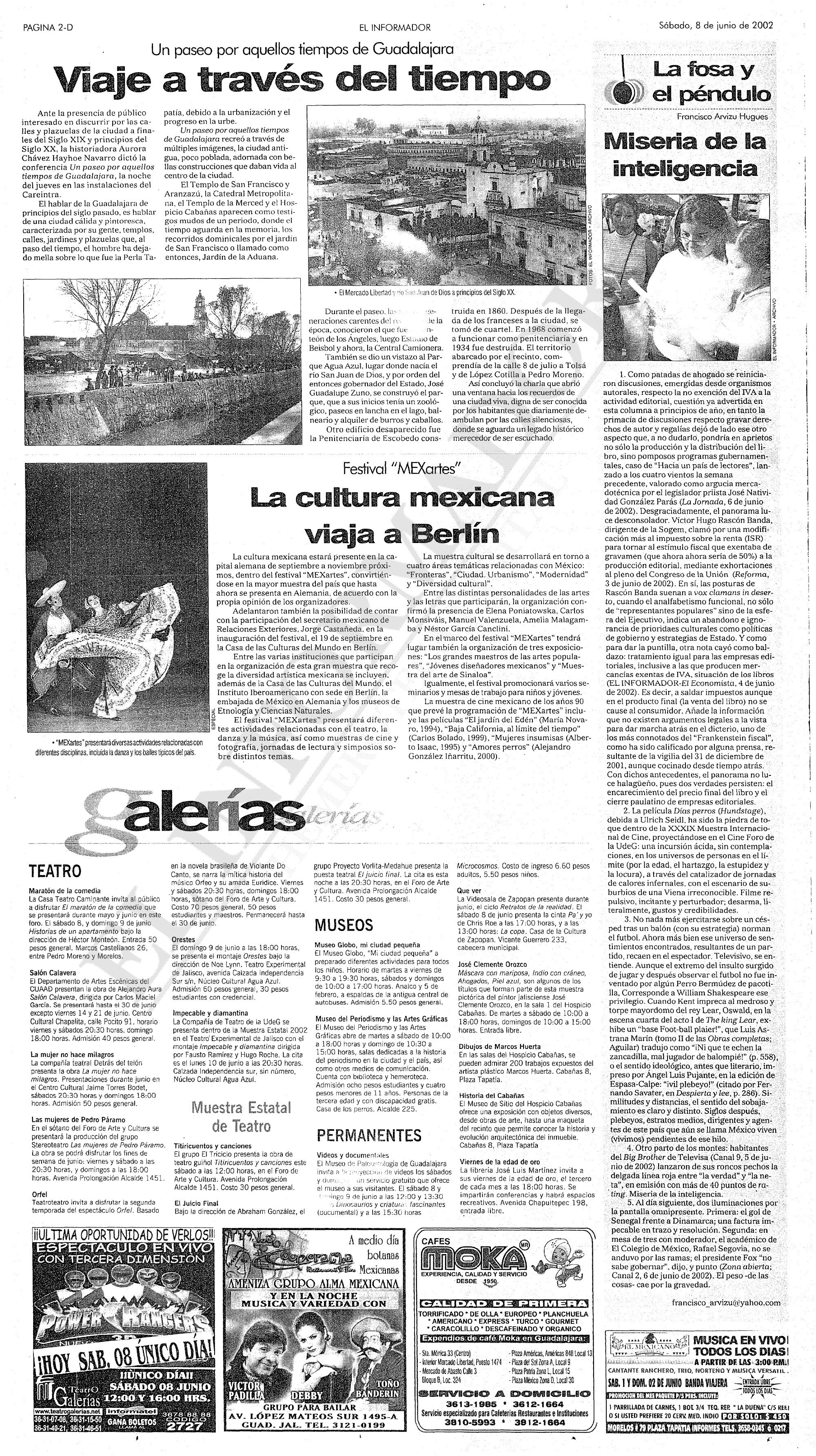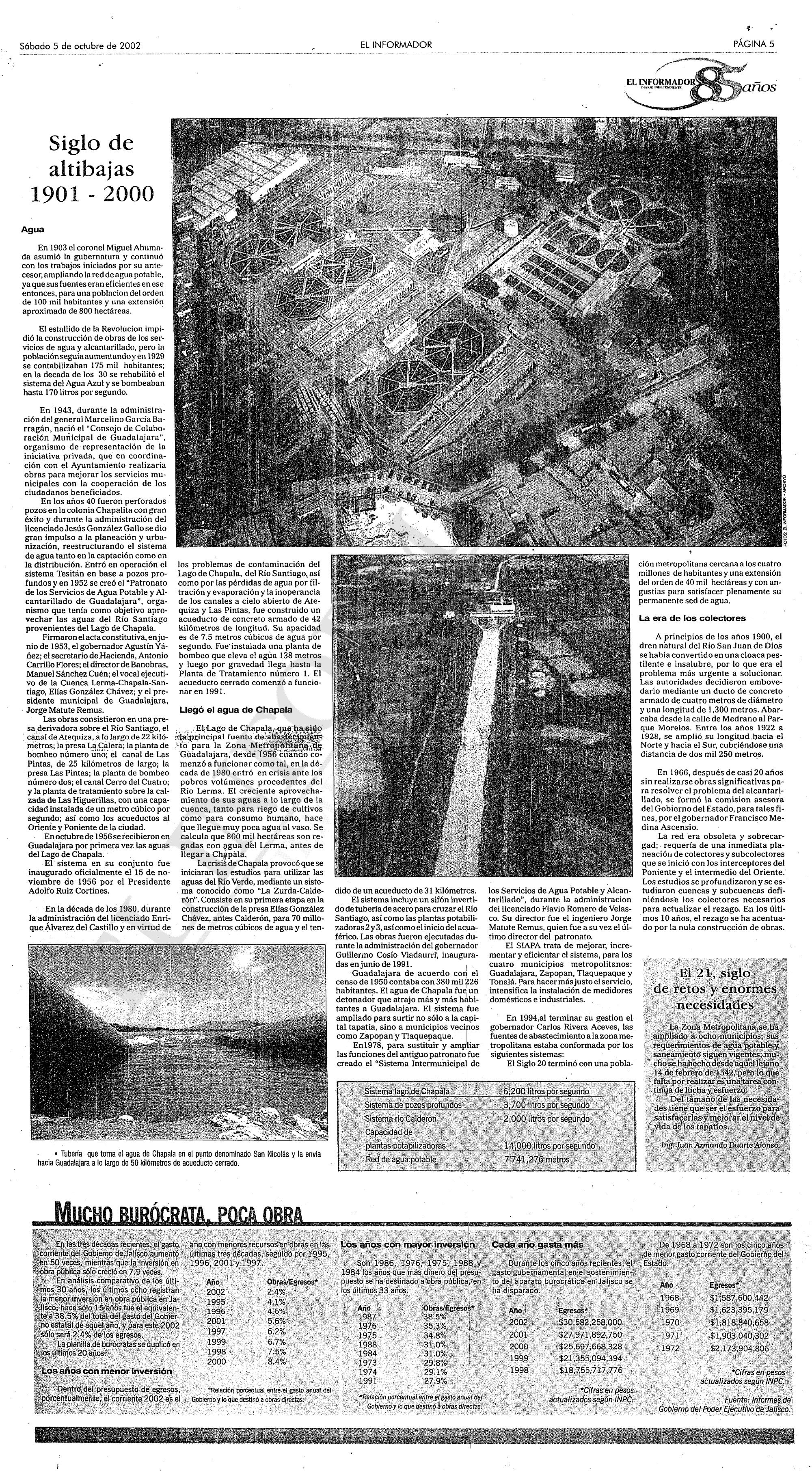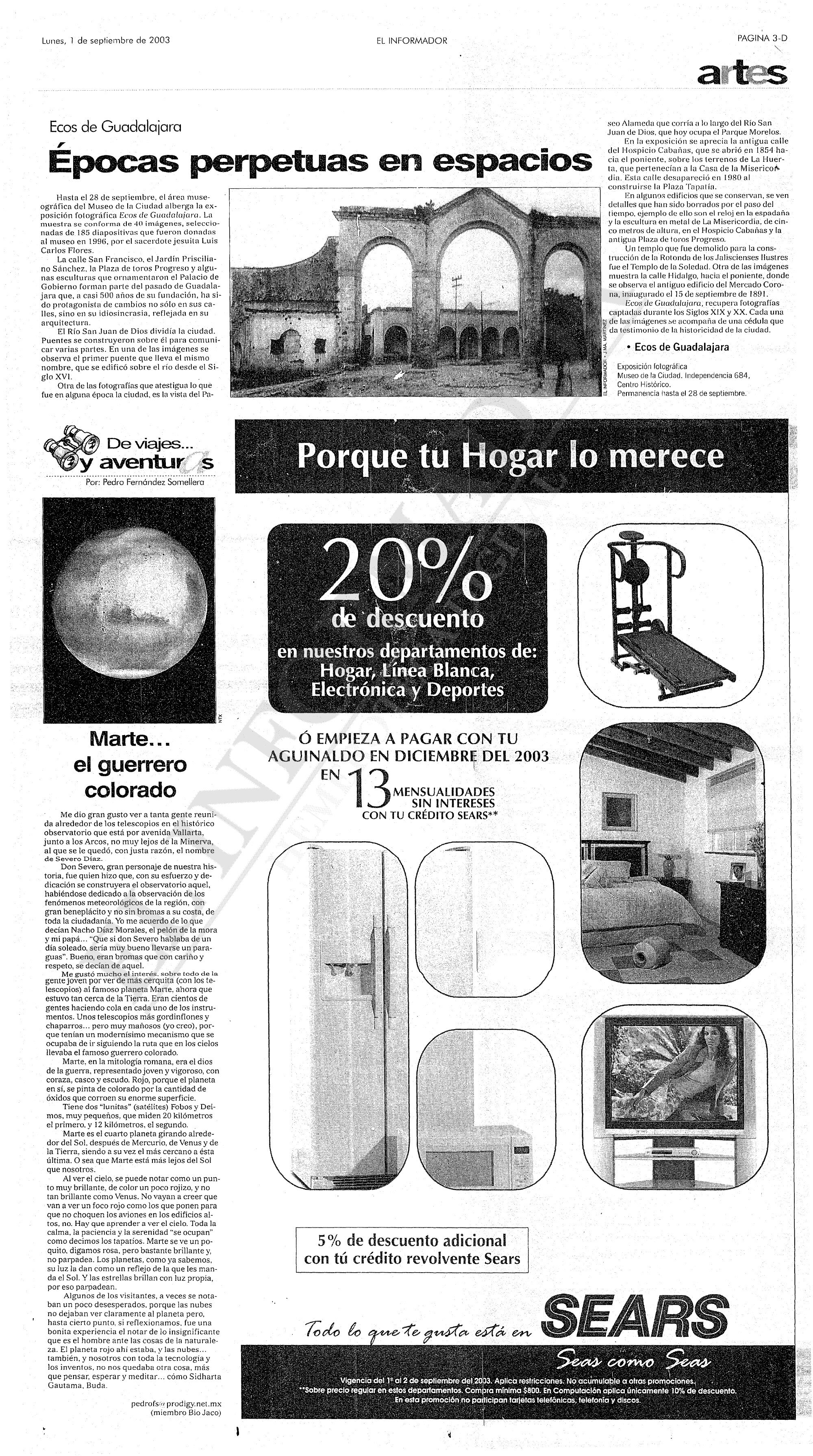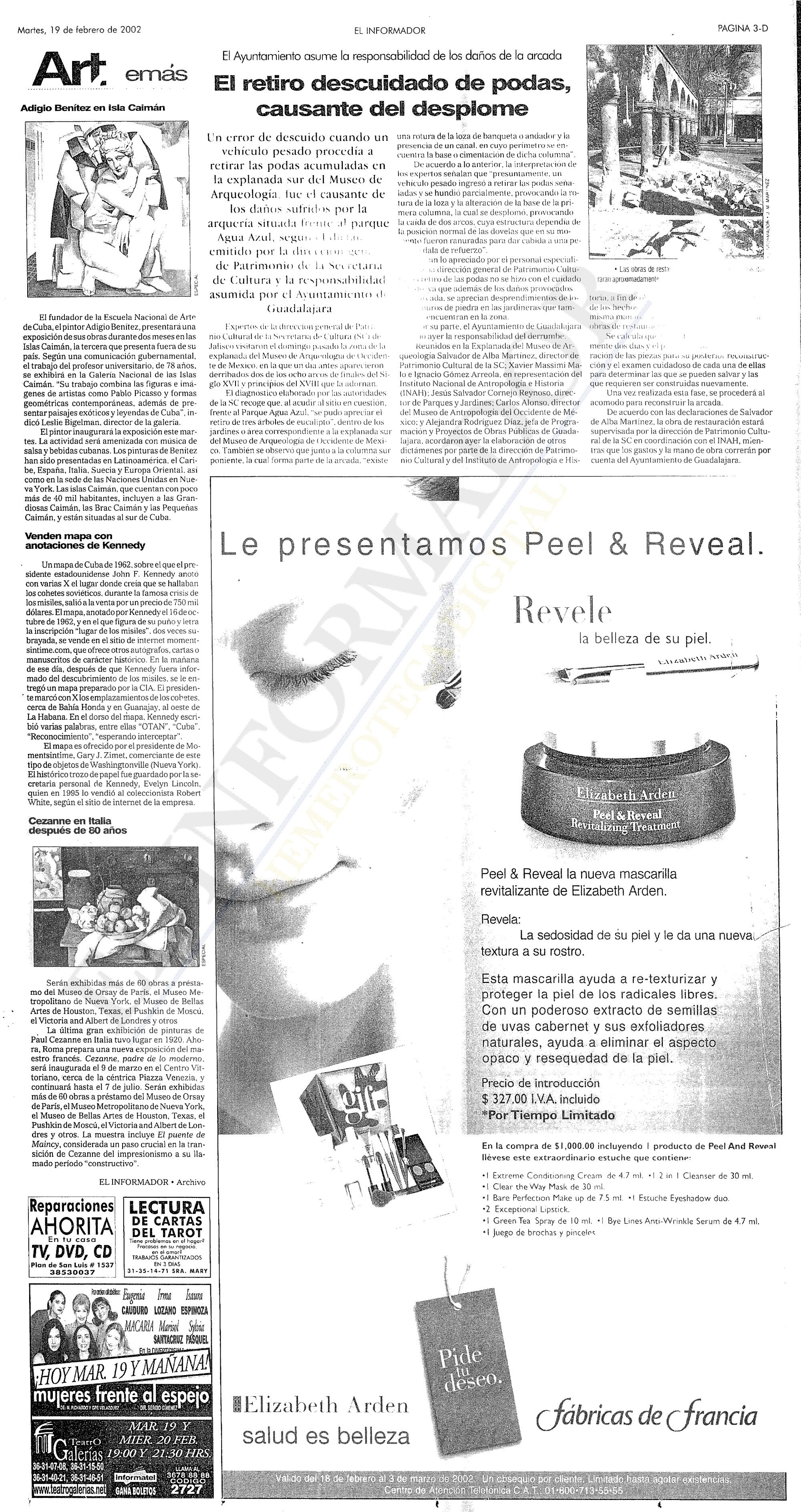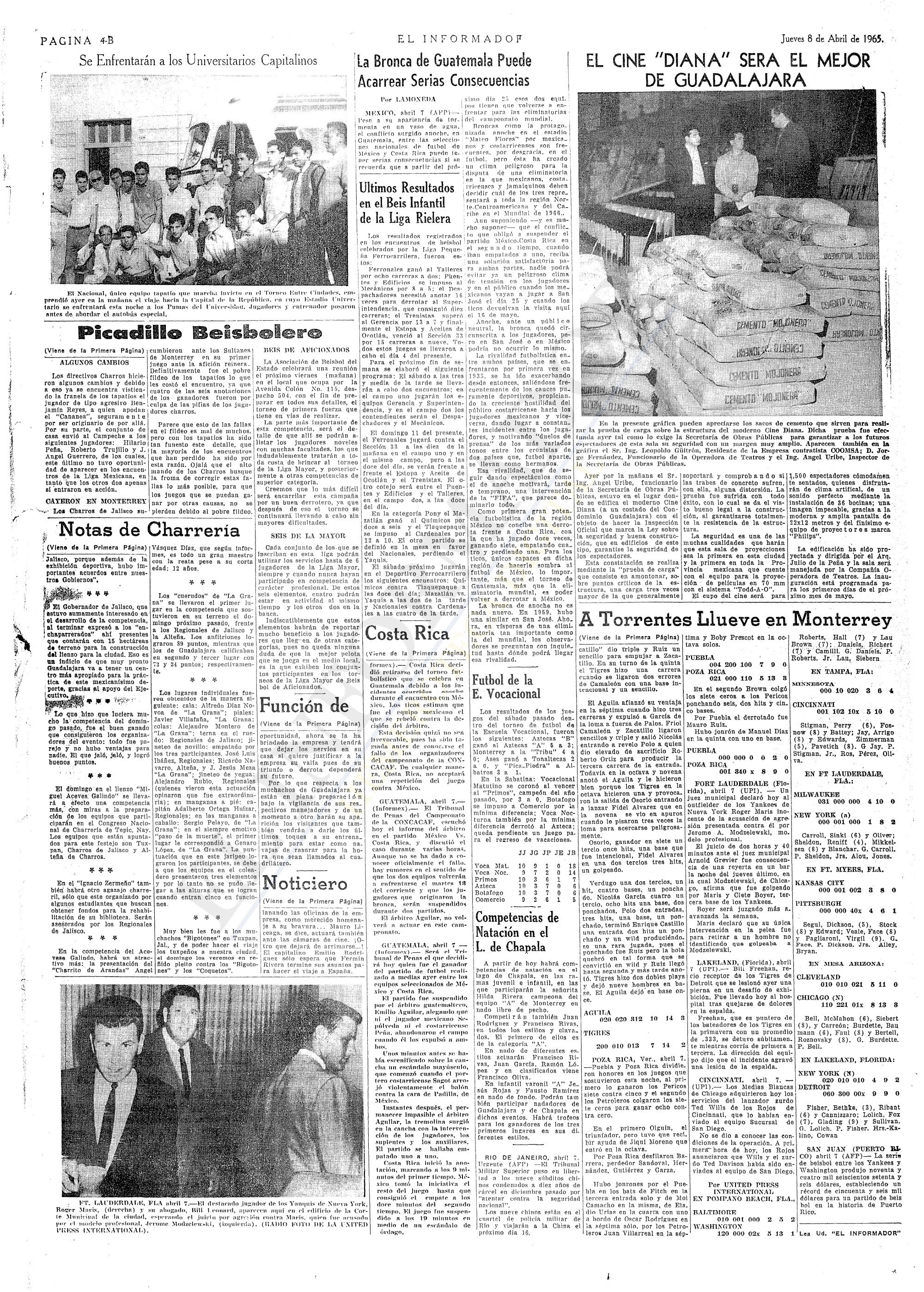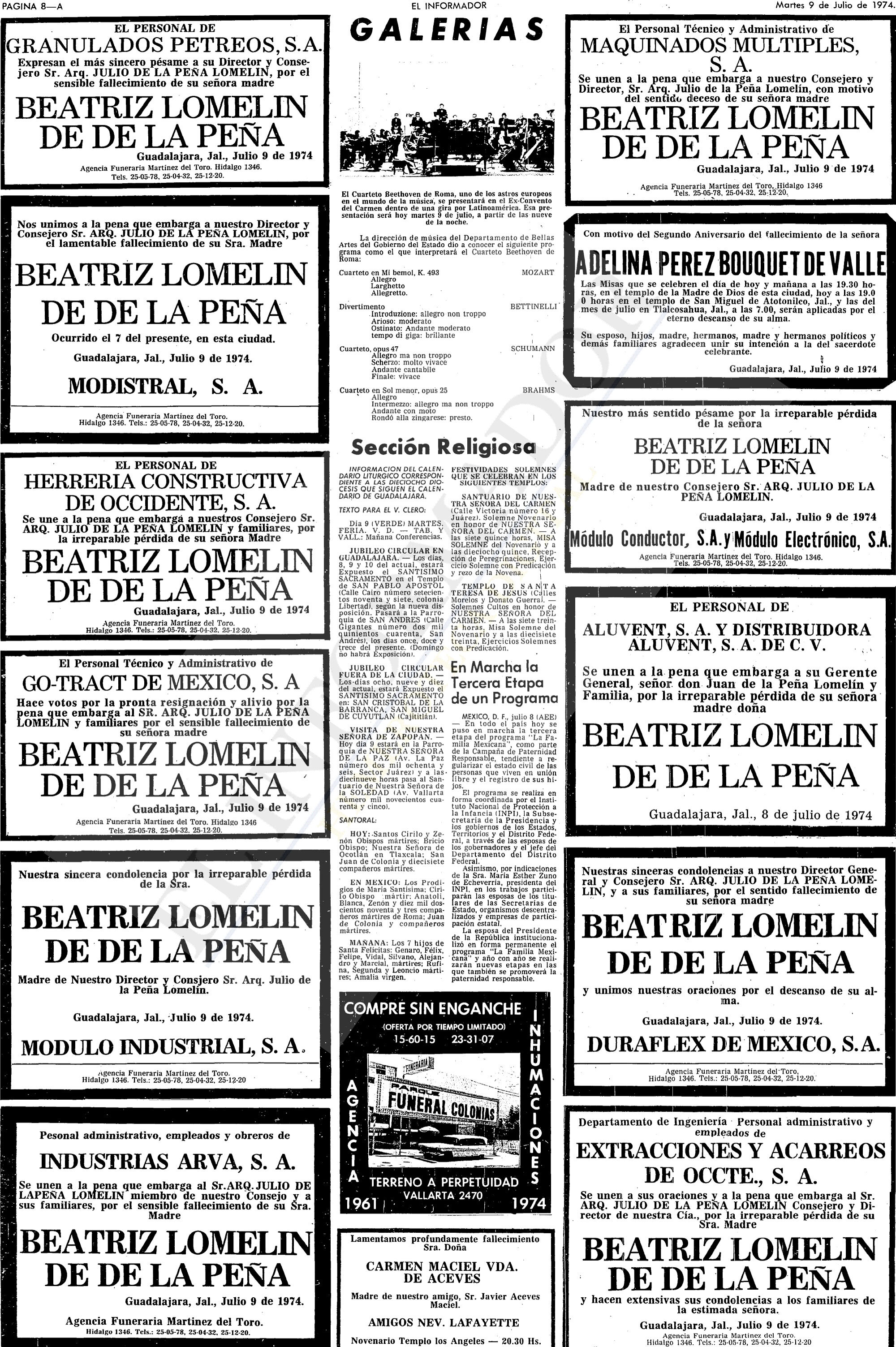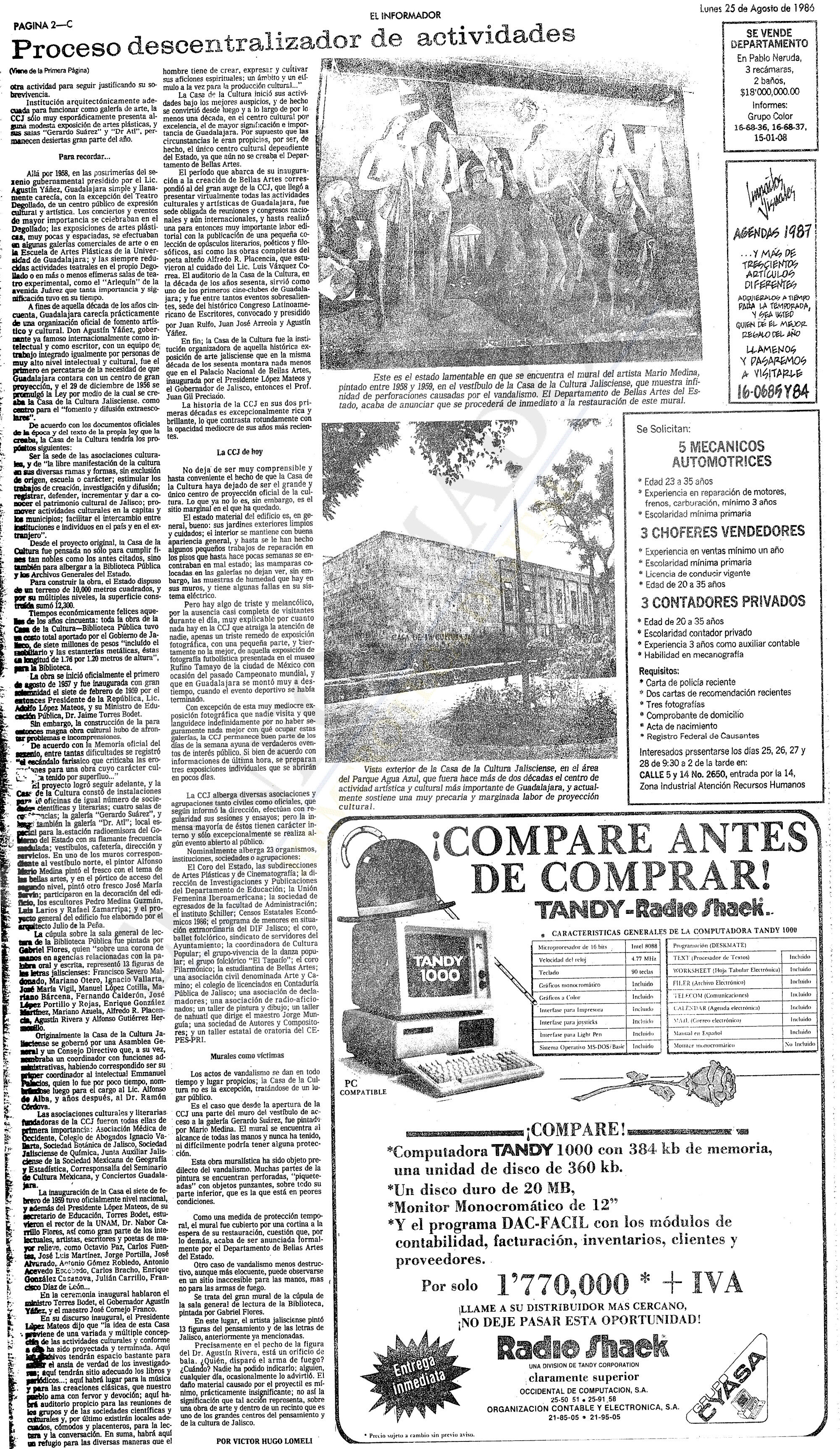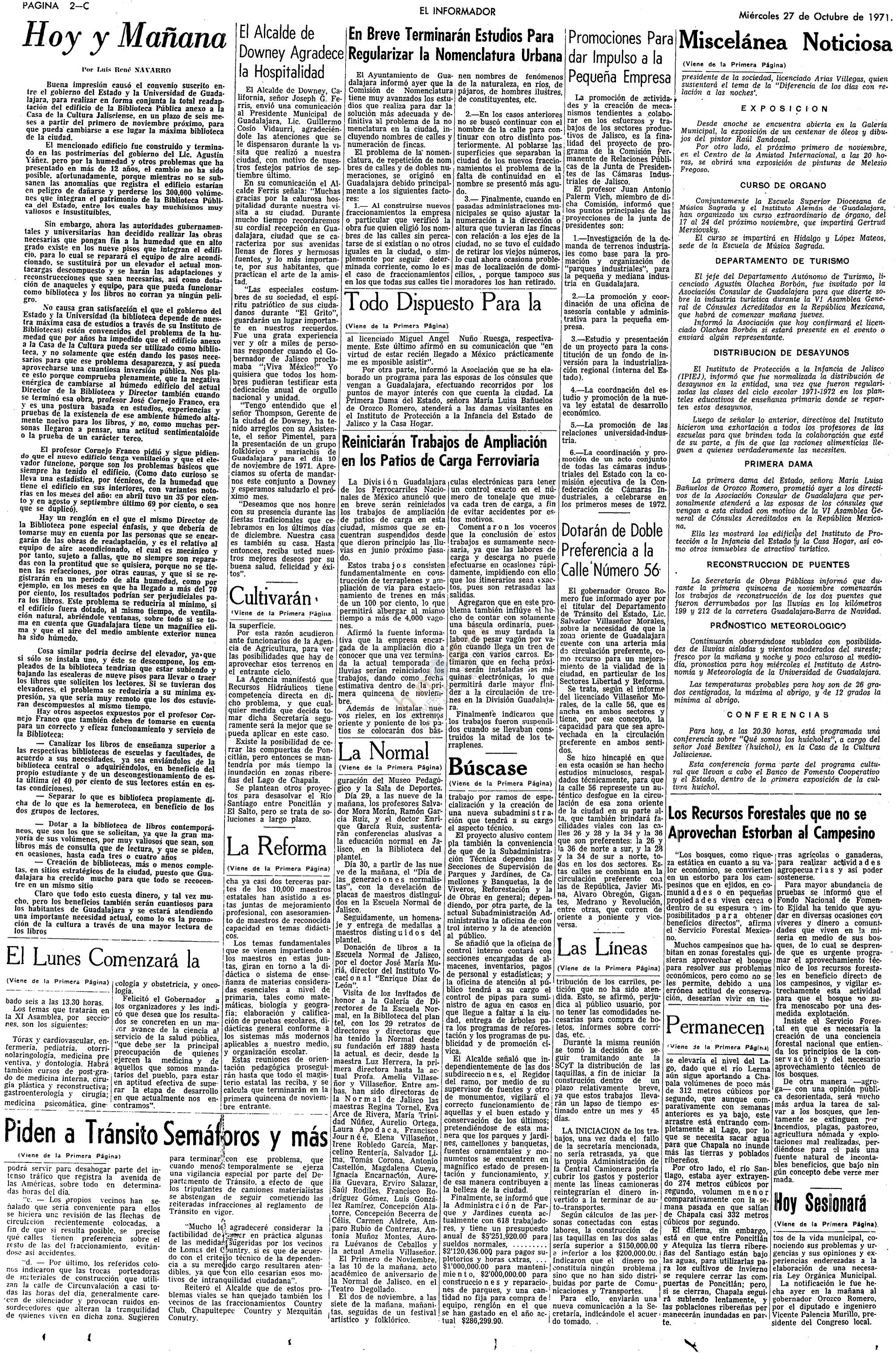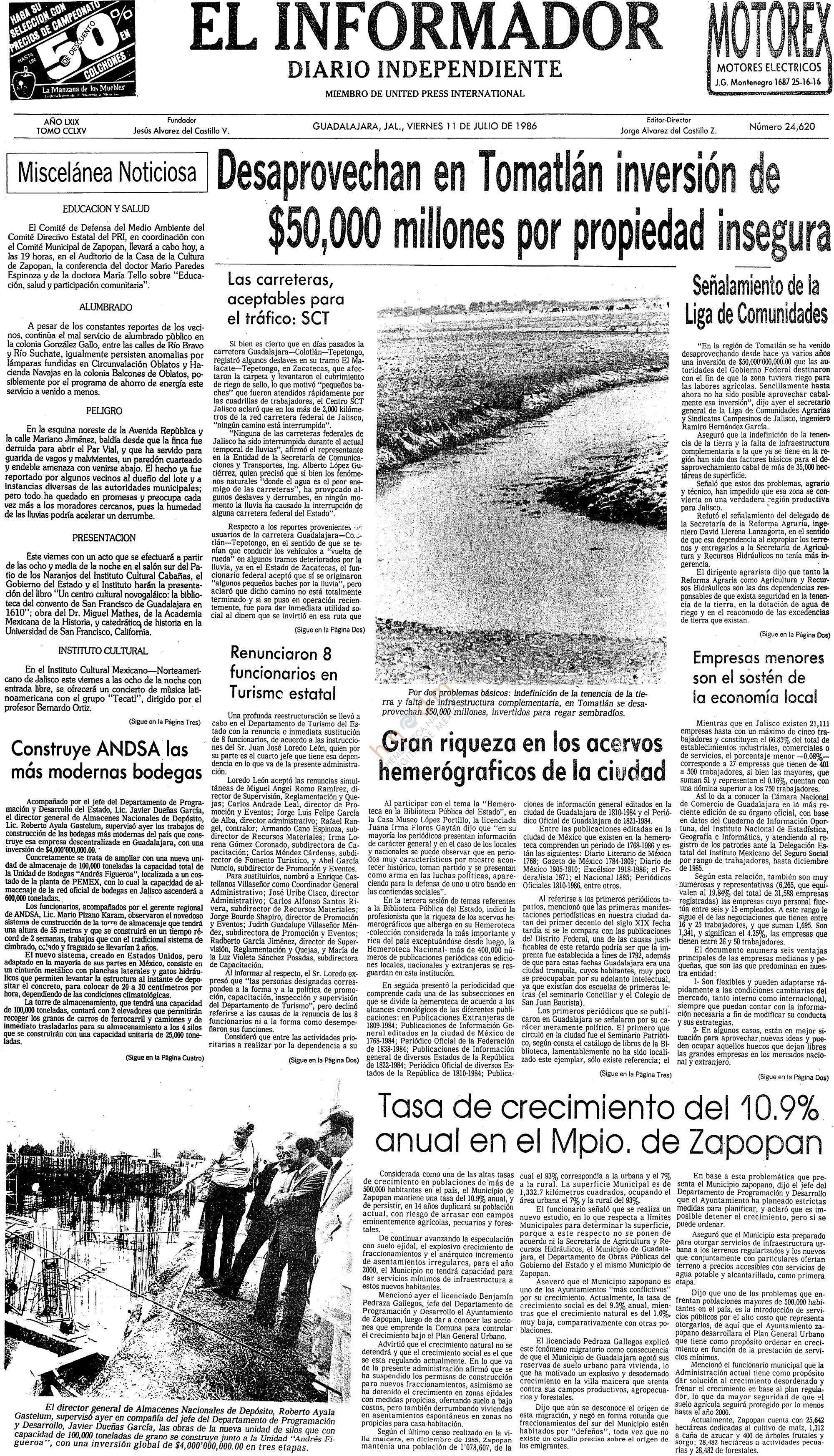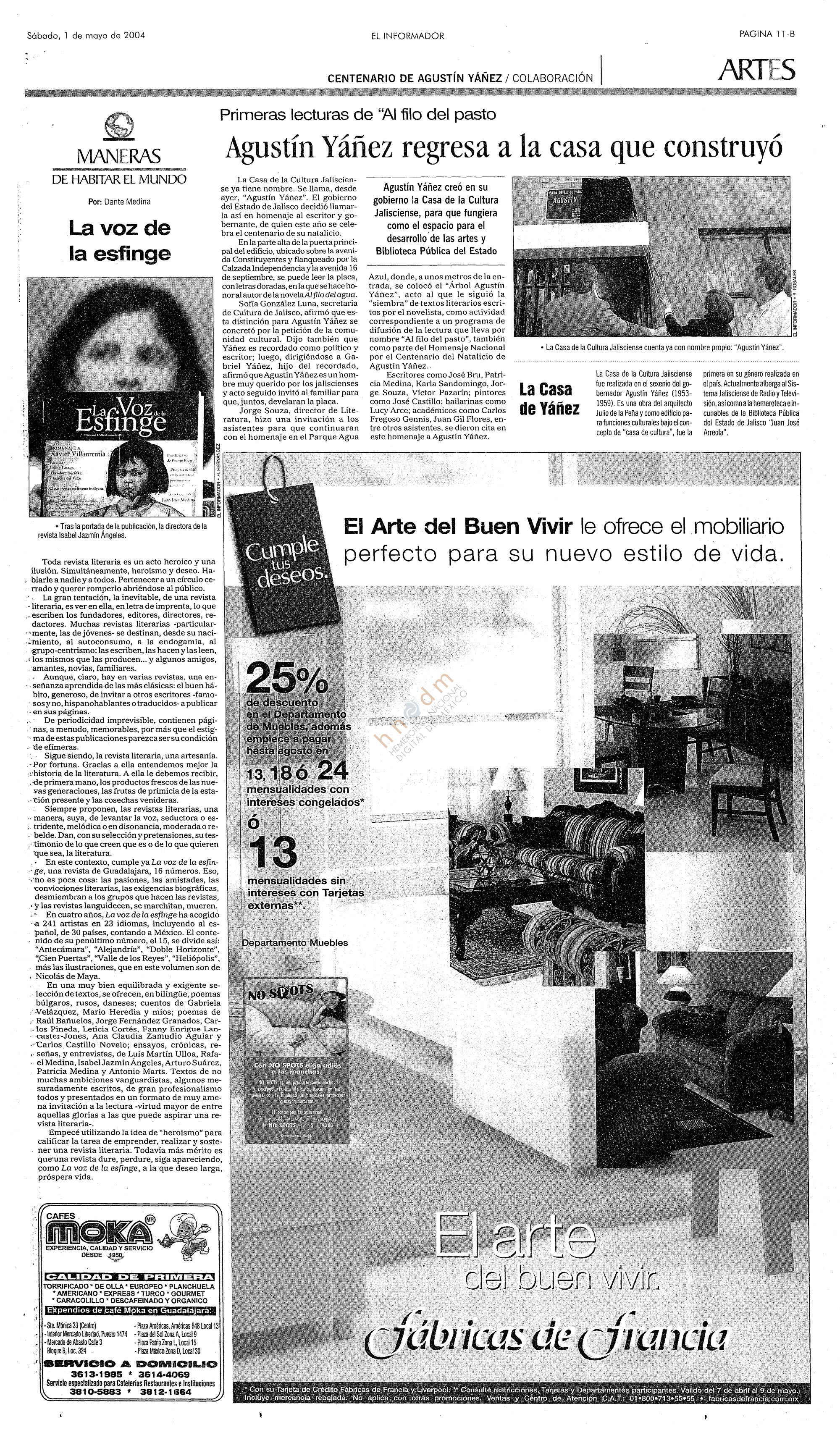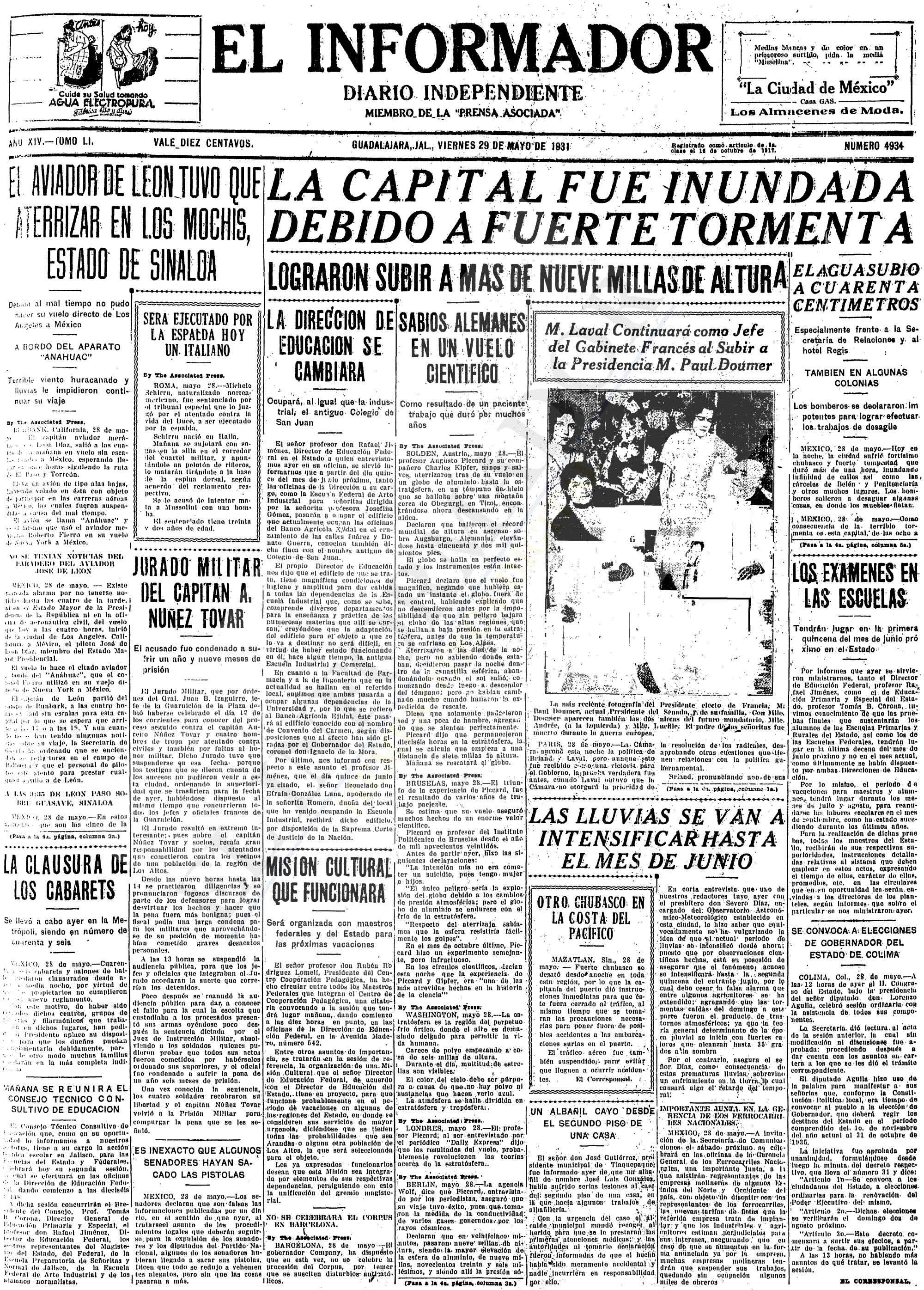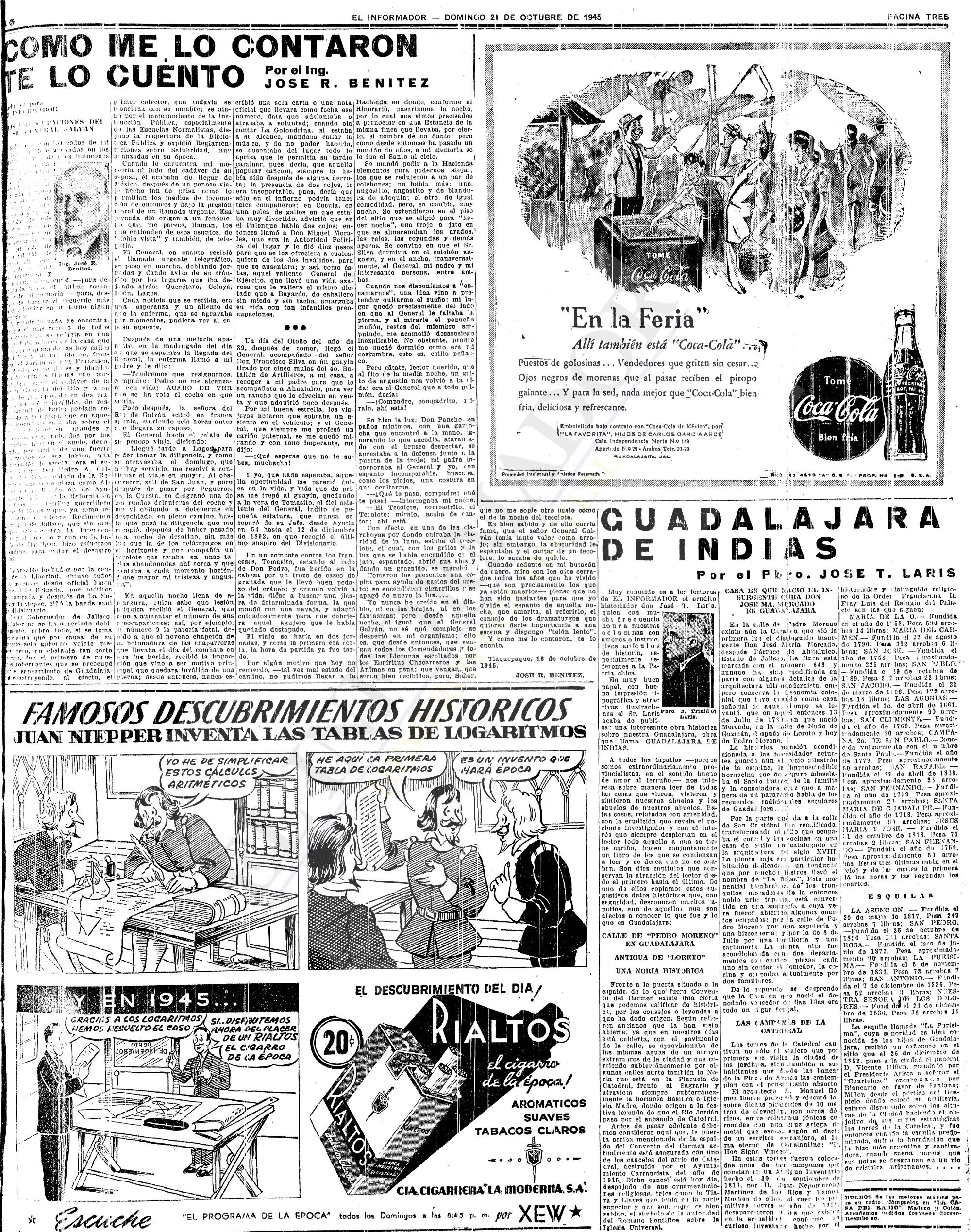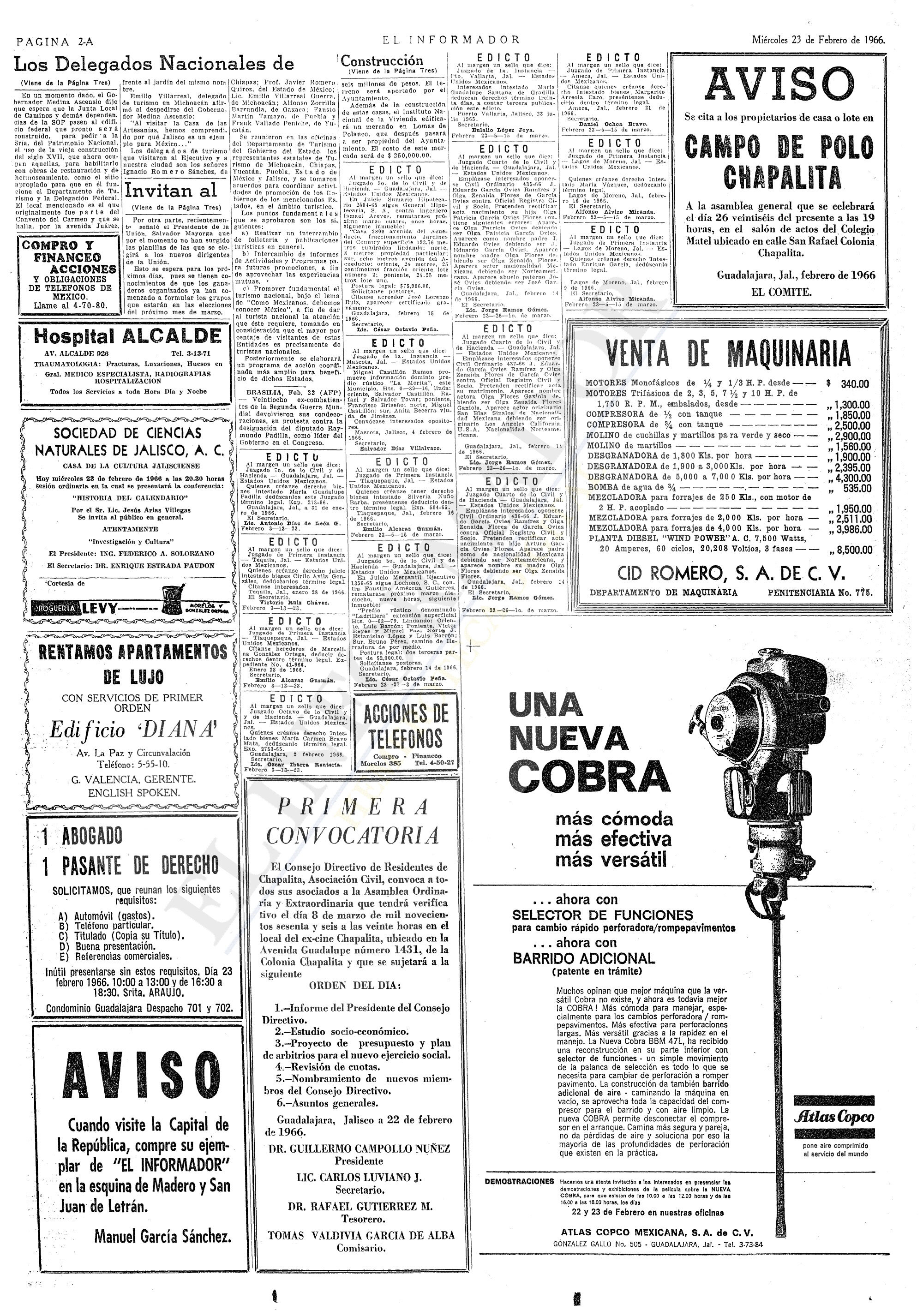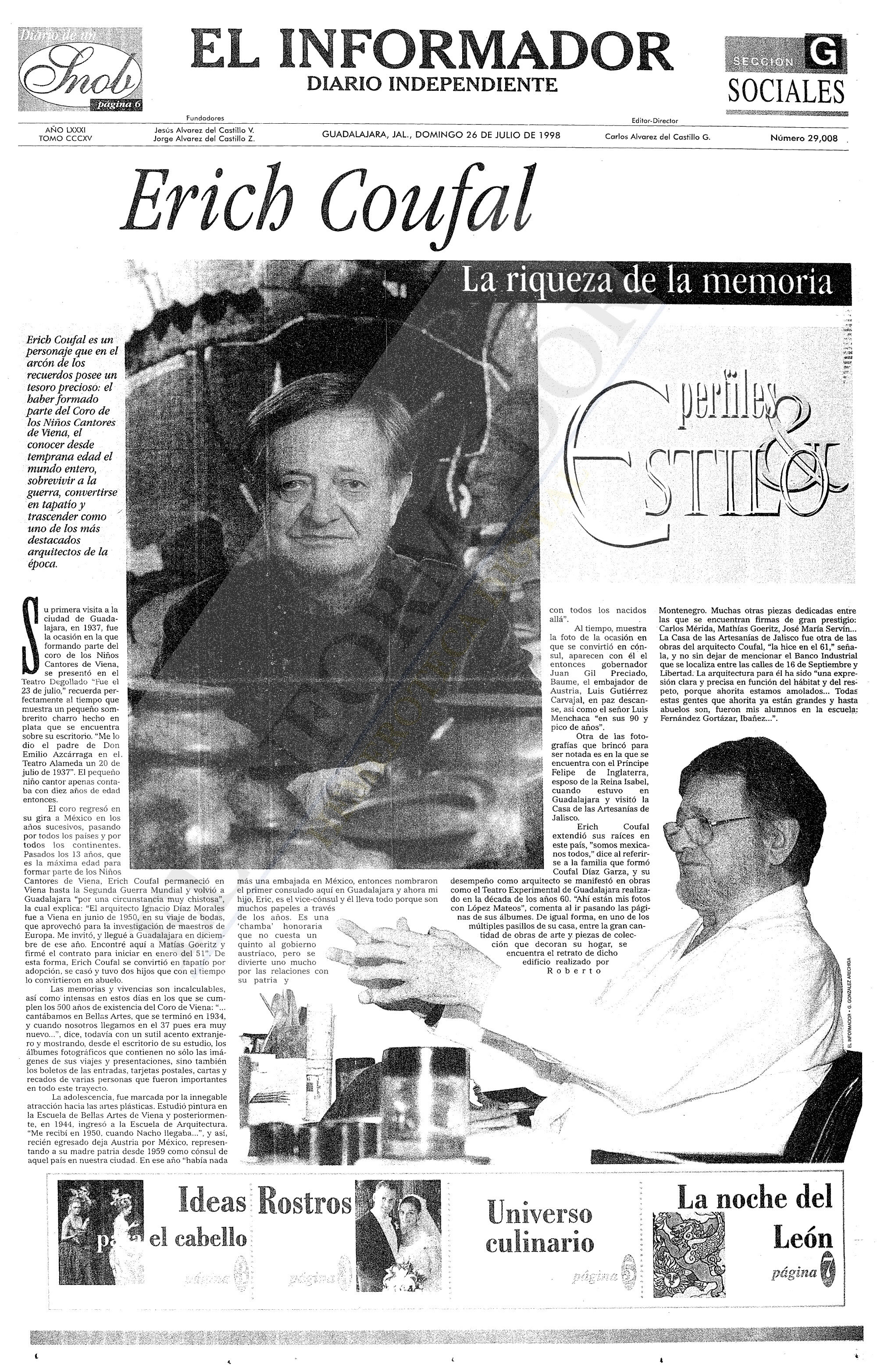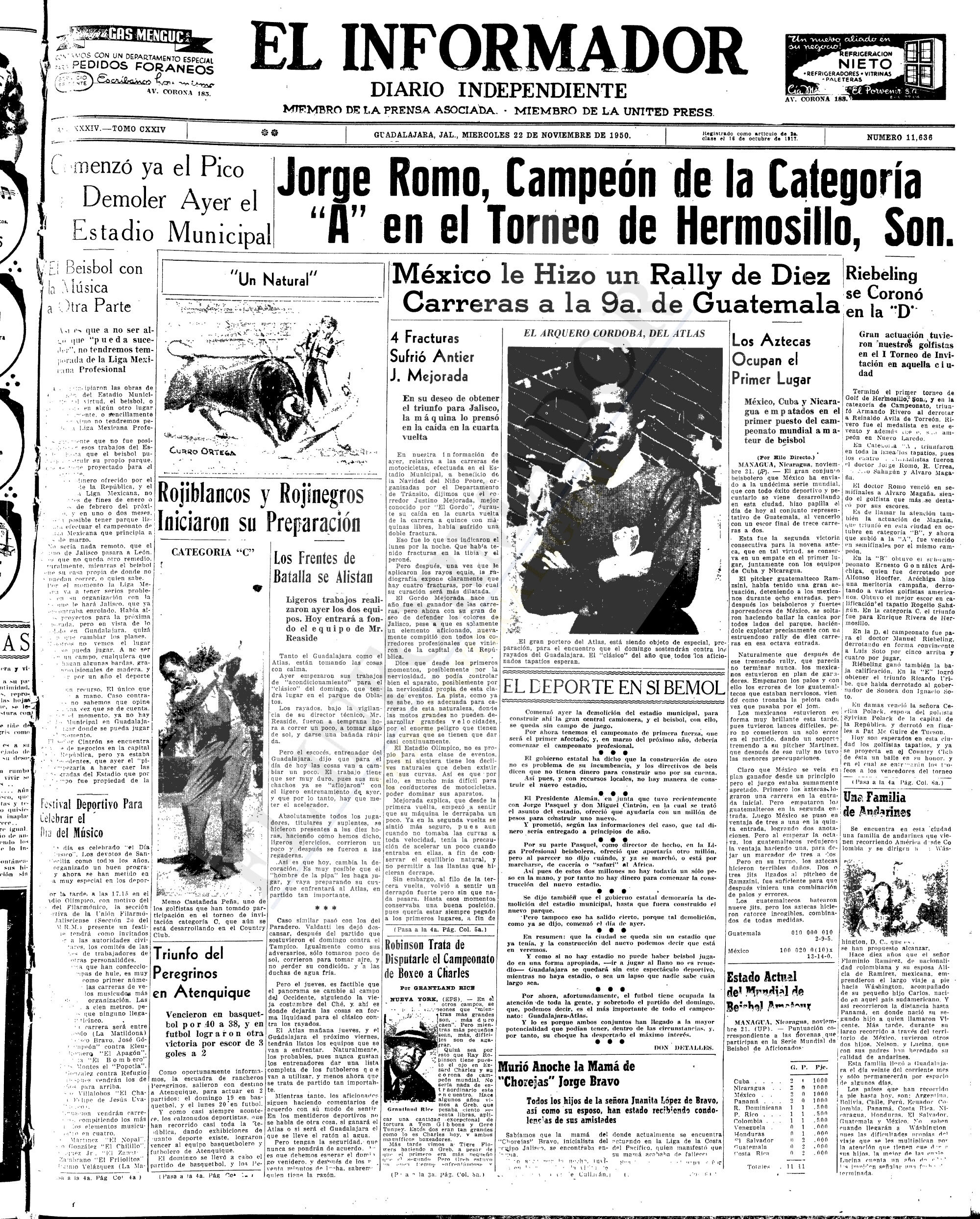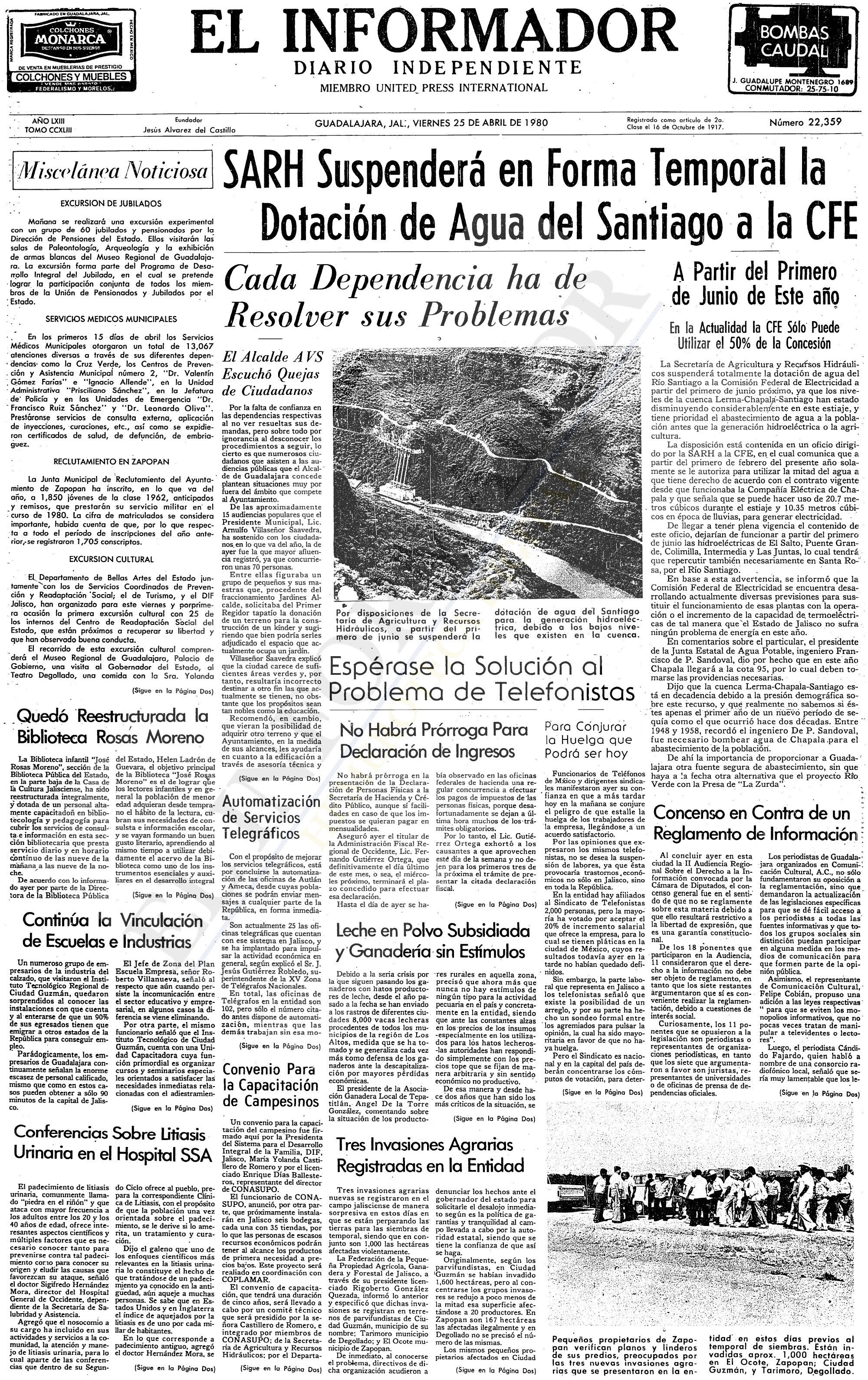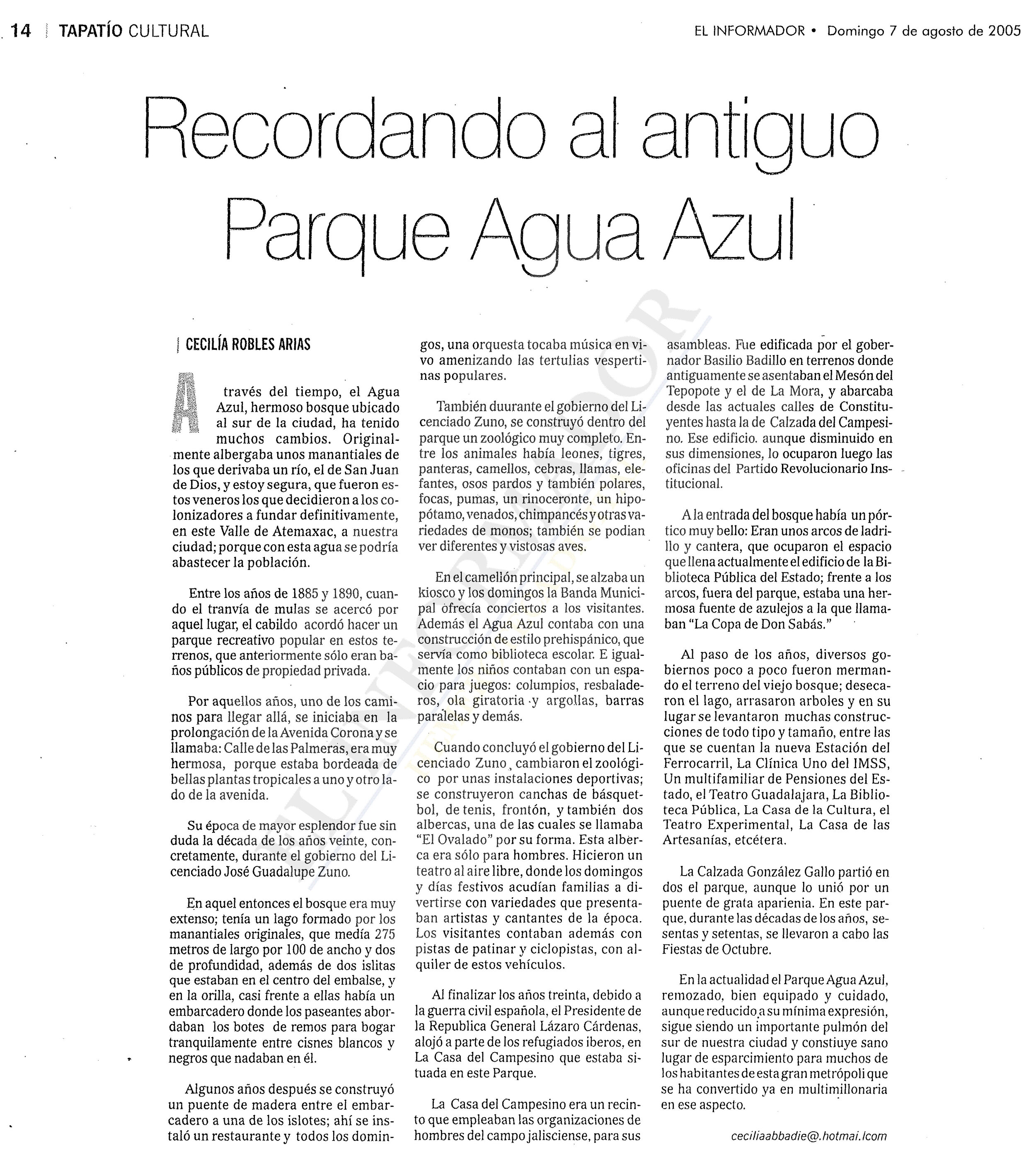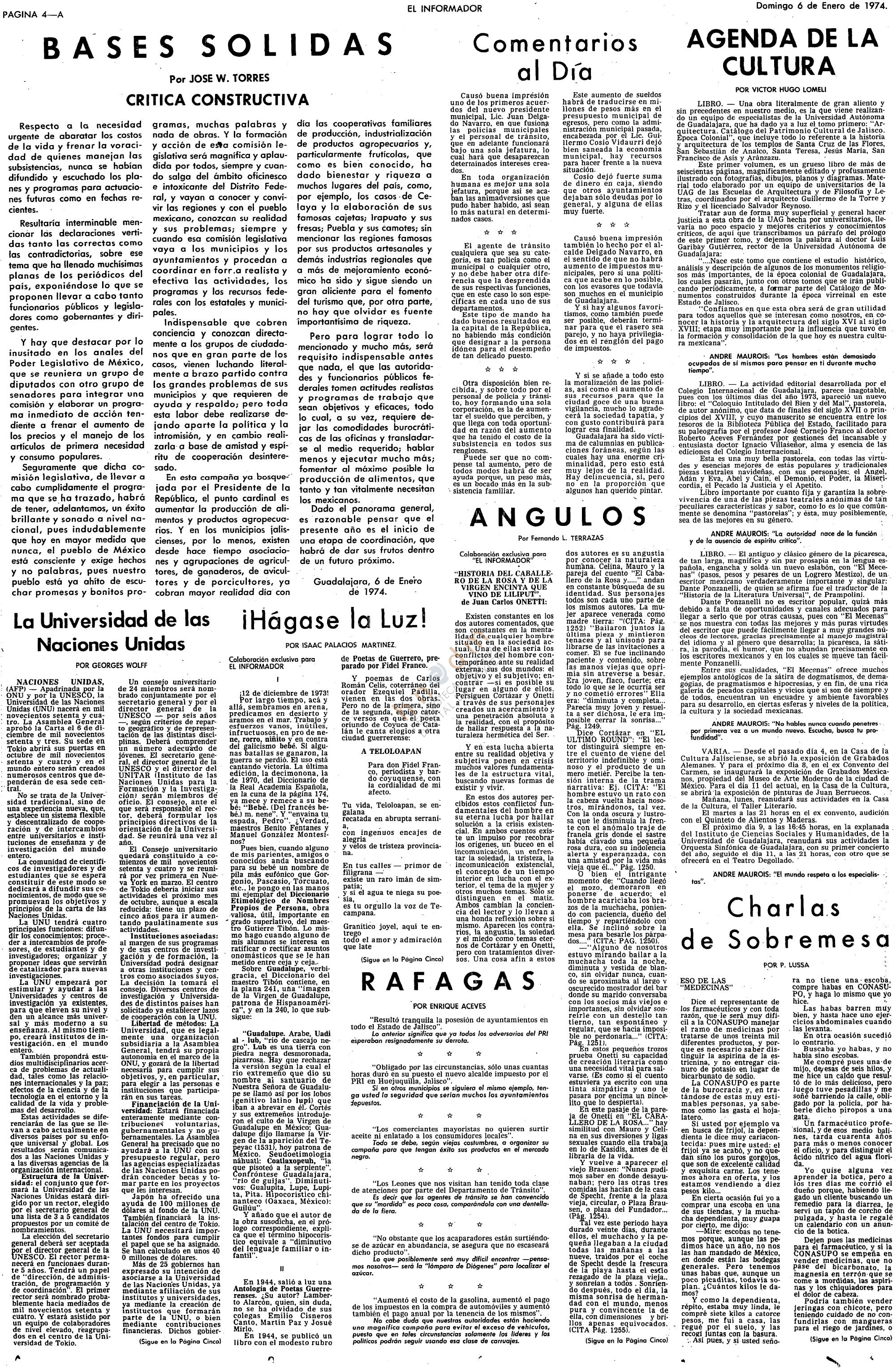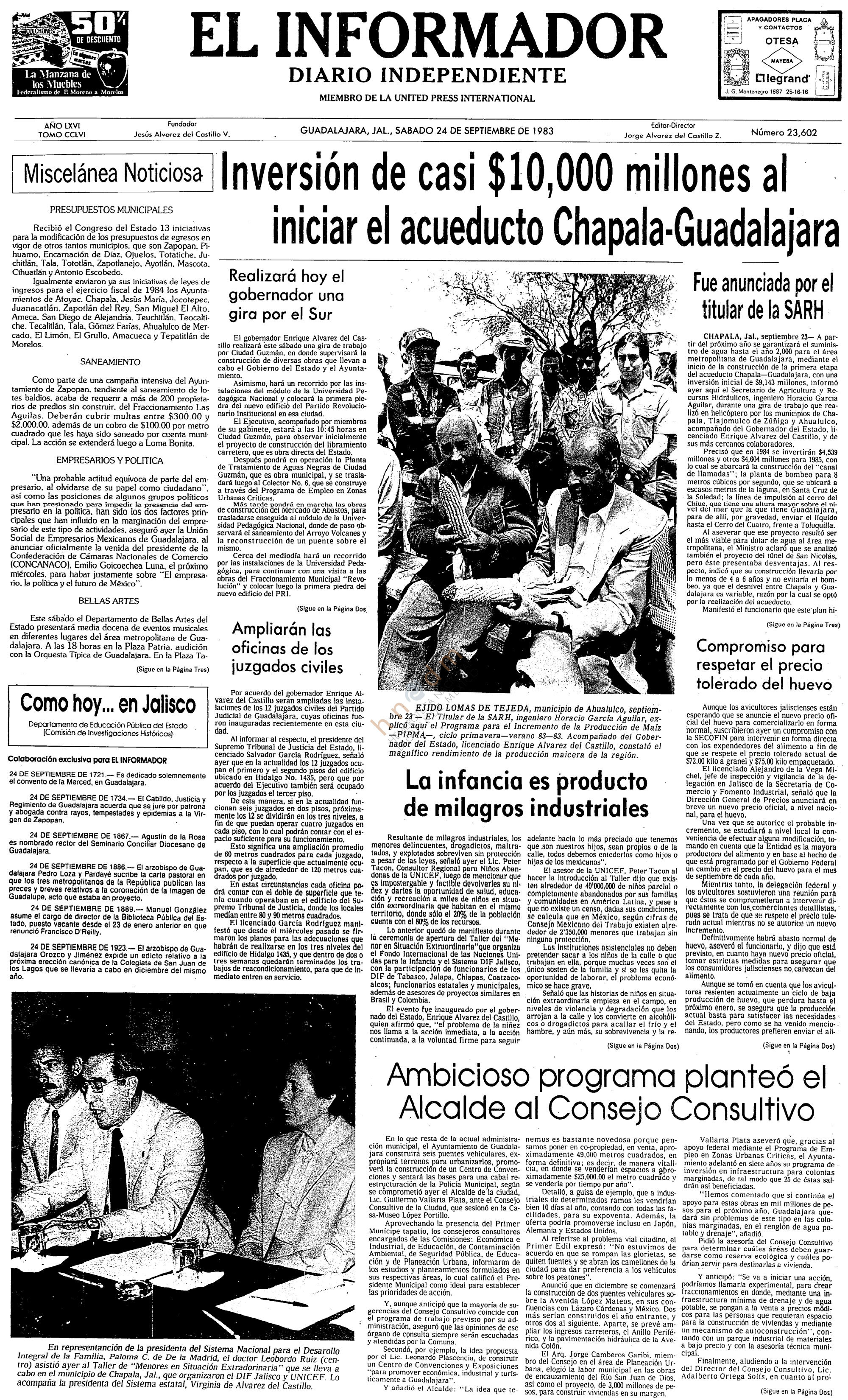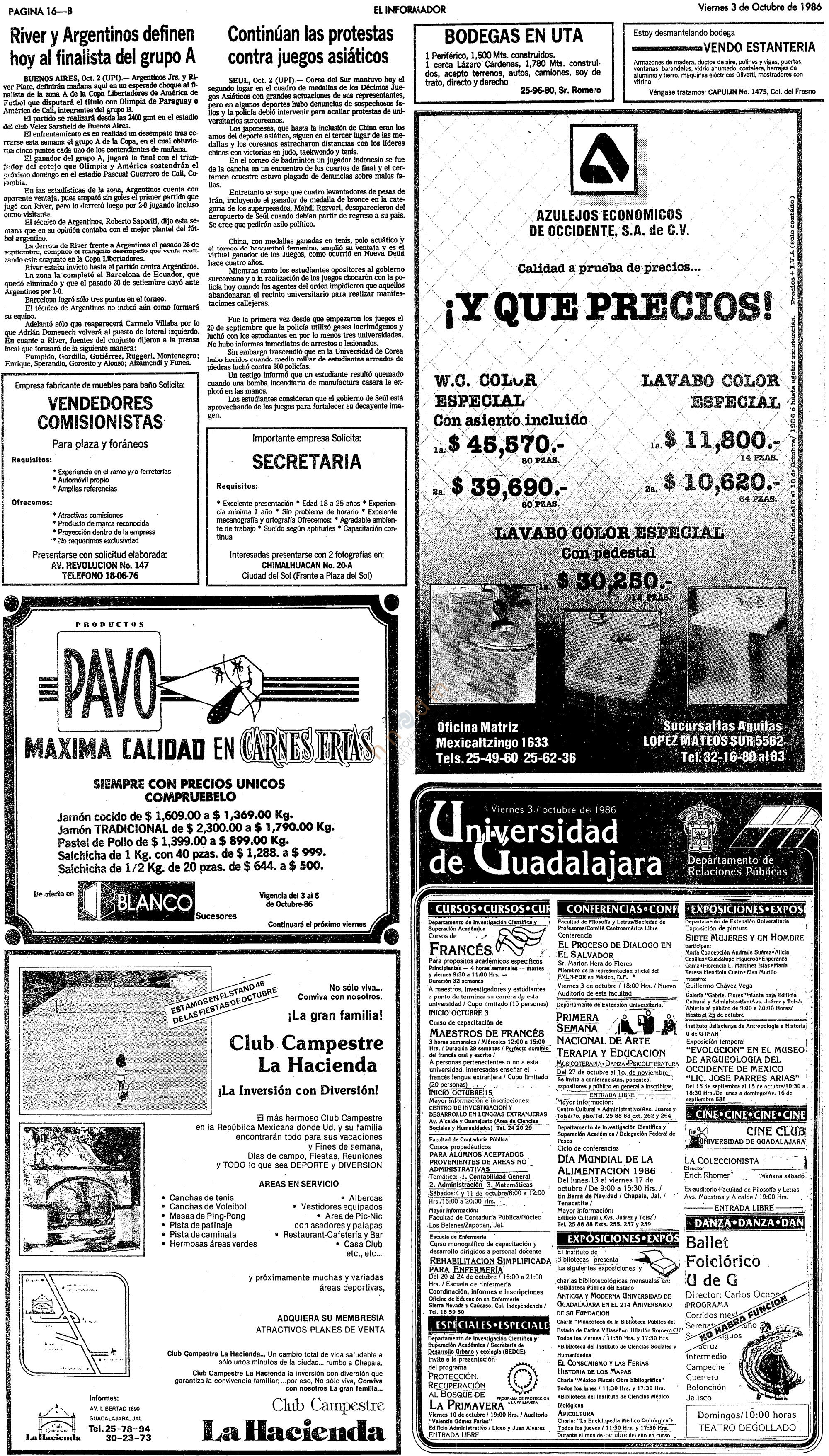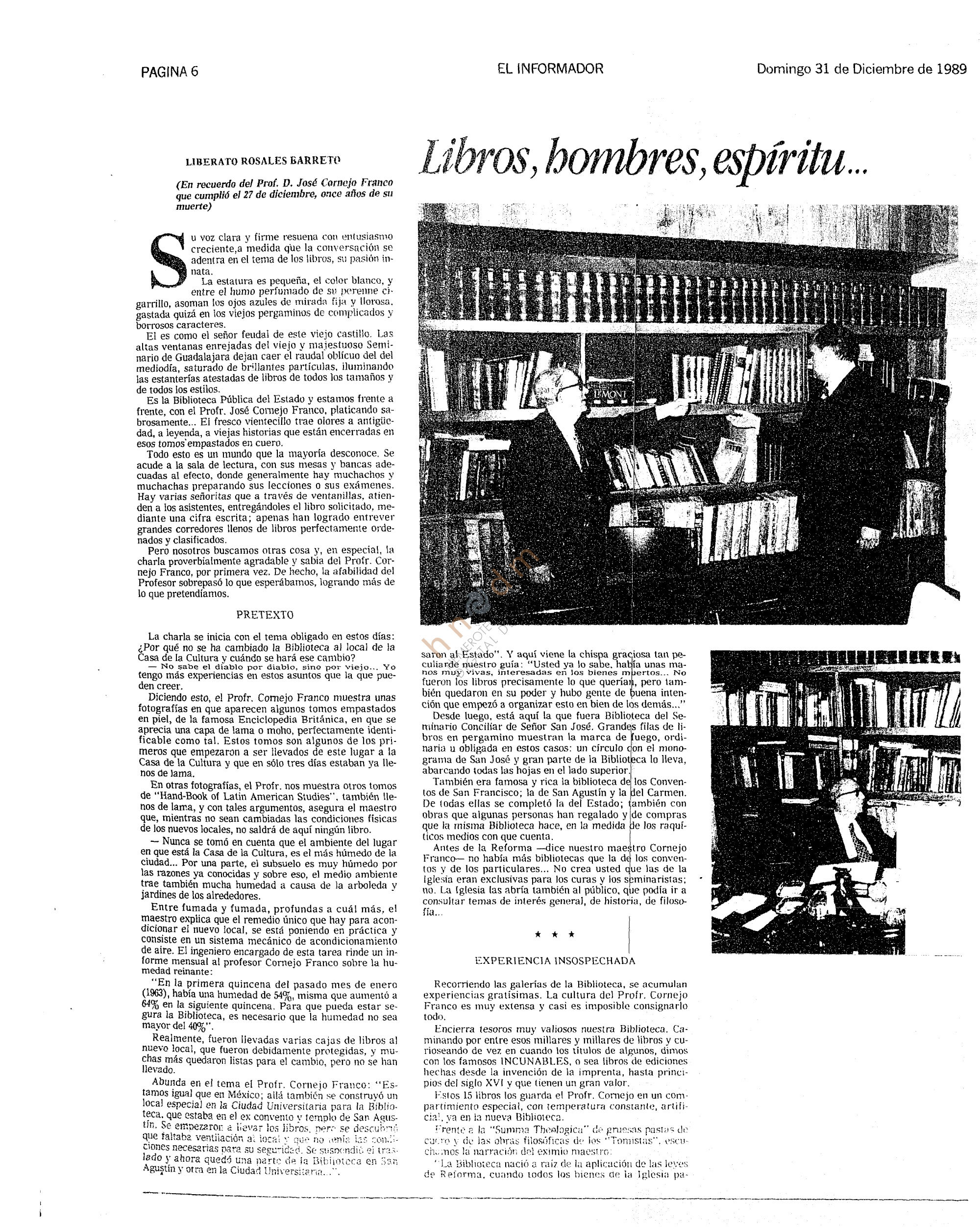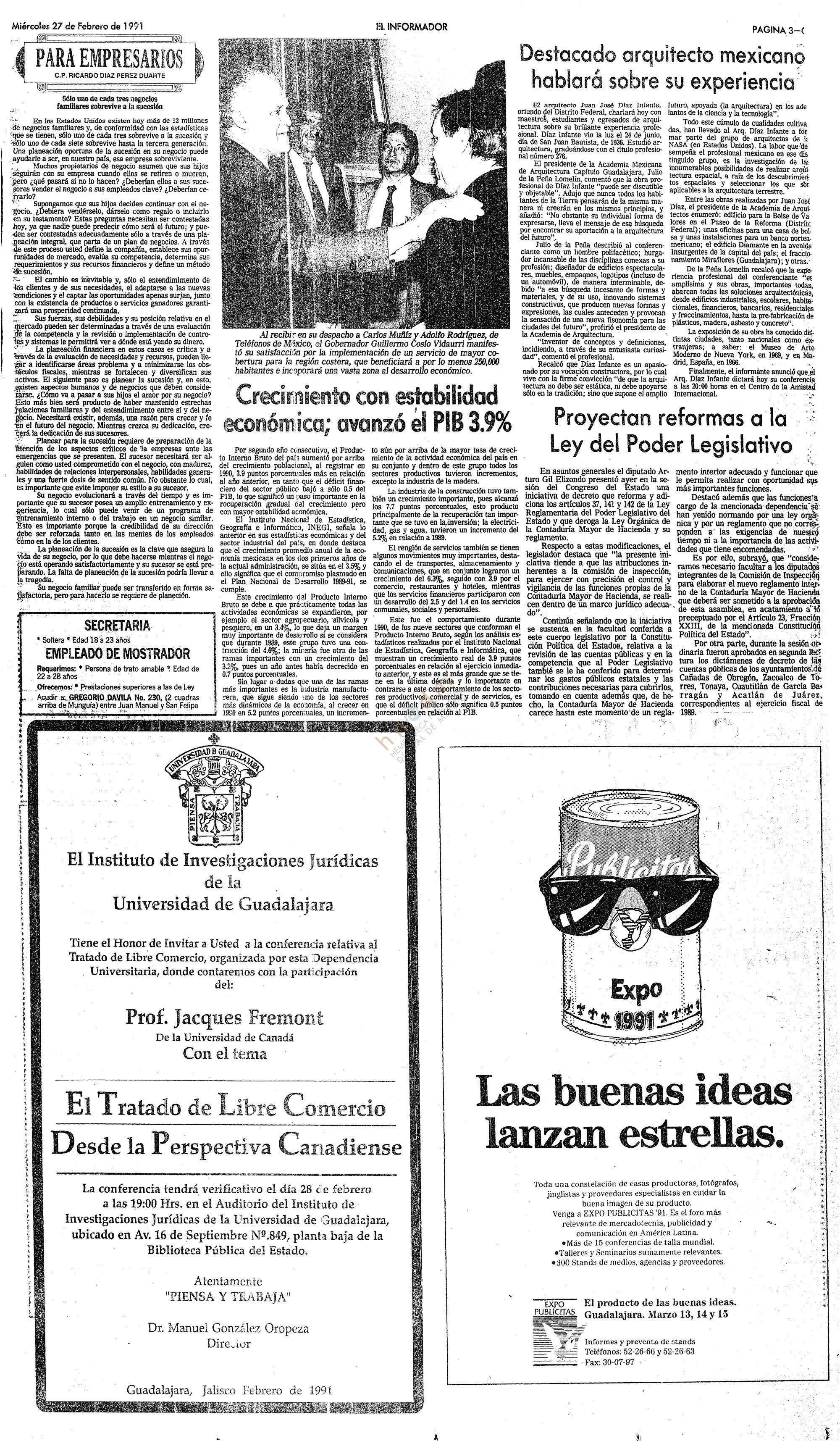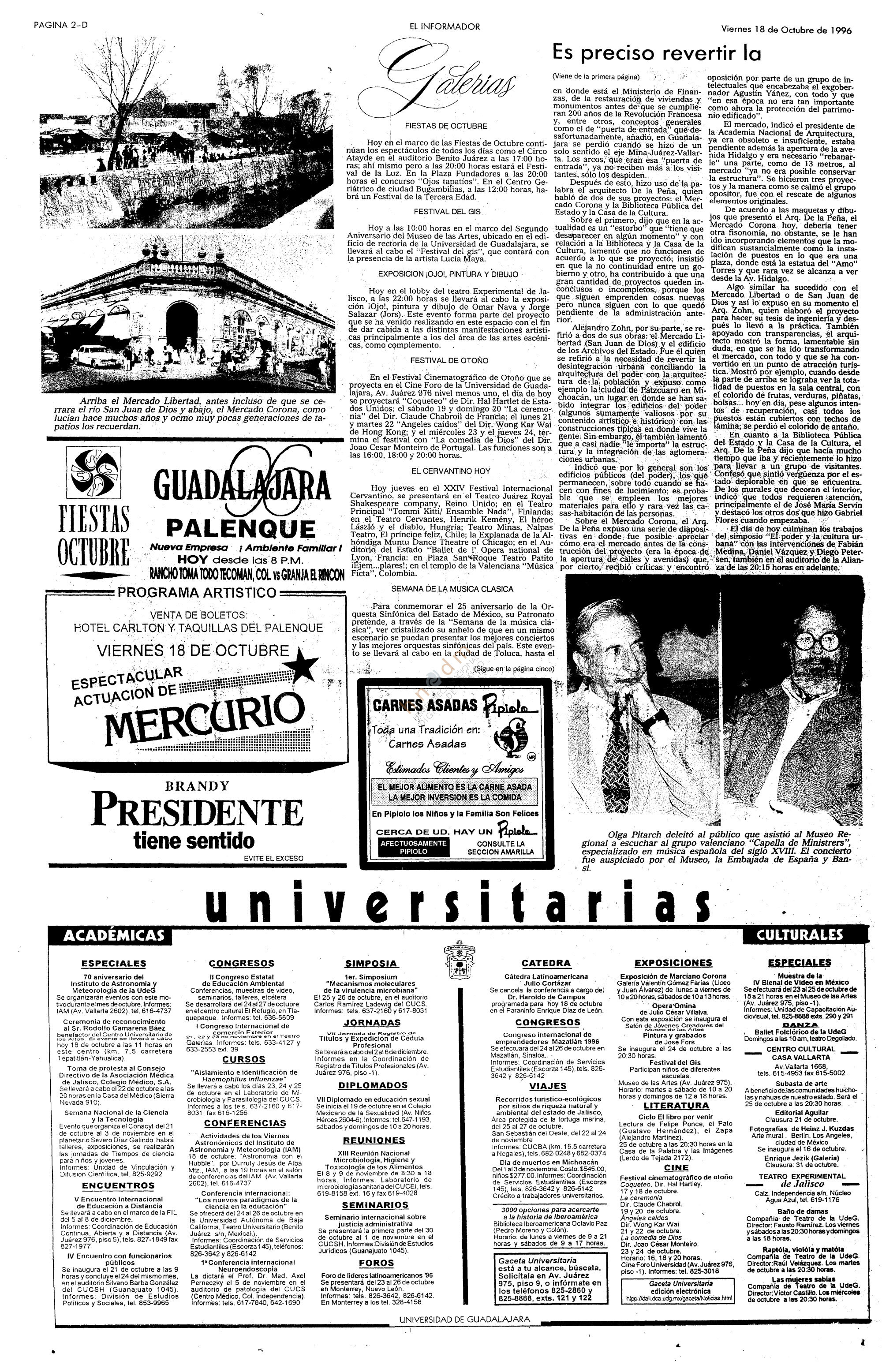THE COLLECTION
The limits of the early Guadalajara were demarcated by religious orders’ convents: to the east, past the San Juan de Dios River and a hospital with the same name, was the Franciscan Analco convent; to the north, the Santo Domingo convent; to the south, the Franciscan order’s main convent and, west, the Nuestra Señora del Carmen convent. These last two possessed libraries full of rare and valuable books.
In 1861, the Mexican Reformation War caused the governmental confiscation of the Catholic church’s assets. The convents were transformed into military fortresses. The books these cloisters sheltered were abandoned, thrown into the already insalubrious San Juan de Dios River, and into the Agua Azul Waterheads. The few volumes salvaged were kept in Guadalajara’s ancient seminary.
In the aftermath of the war in a city halfway through its reconstruction, the Seminary was turned into a lyceum: its premises were used as a center for education and culture, and the Public Library was installed in one of its rooms. More than 100,000 volumes remained there until 1975, when they were relocated to the area of the exhausted Agua Azul Headwaters: the books returned to the place where other books had disintegrated in the past.
From the onset of the 20th century, urban growth in the headwaters area triggered a deep transformation in that territory. The creation of a park in its land, alongside the moving of the railway station to the city’s south and the construction of the international airport to the east, fostered the creation of a series of buildings: Jalisco’s Experimental Theater and Arts & Crafts House, both by architect Erich Coufal; the Archaeology Museum and the acoustic shell in the park, by architect Alejandro Zohn; Guillermo Quintanar’s housing building Guadalupe Victoria; the Guadalajara Condominium, the Diana Cinema, the Juárez Square, and the ensemble formed by the Jalisco Cultural House and the State Public Library, by Julio de la Peña. All these constructions created a collage of sorts in the urban grid.
Between 16 de Septiembre Avenue and Independencia Promenade, along the course of San Juan de Dios River, there is the ancient site of the Jalisco State Public Library. This building, in conjunction with other buildings, began an ultimately failed project for a cultural circuit.
The humidity of the headwaters found its way rapidly through the foundations, walls, and tiles that line the library’s walls, fostering the growth of microorganisms between the pages of many books. The building’s structure, which rests on lacustrine land, shifted until fracturing in 1995, after being hit by the Colima earthquake. Since 2004 and until its inauguration in 2007, the materials sheltered in this site were taken to the new Juan José Arreola Library.
BELIEVE IT OR NOT
On the first, second, and third floors of the ancient library, El informador newspapers pile up, out of public access, in black bags. This diary was one of the first in the region to digitalize its contents, so that they would exist elsewhere than on the paper’s unstable surface.
The surface, walls and floors of the ancient library, designed to stand firm, seem as fragile as paper sheets. With the demise of the promises of splendor and progress materialized in this architectural piece, the neighboring buildings and the social tissue filling them also wore down. The Agua Azul Headwaters and its rivers, on the other hand, found their way through the porous stone, the journal sheets, and the air’s humidity.
To read the journals (in Spanish) click here or use the tags / search box below to explore by subjects or years:
- 1925
- 1925-03-08
- 1934
- 1934-02-06
- 1940
- 1940-11-08
- 1944
- 1944-08-06
- 1950
- 1950-10-09
- 1950-11-01
- 1957
- 1957-07-20
- 1957-09-04
- 1961
- 1961-01-12
- 1964
- 1964-09-09
- 1964-10-30
- 1965
- 1965-04-08
- 1969
- 1969-12-15
- 1973
- 1973-10-30
- 1974
- 1974-01-06
- 1974-10-13
- 1983
- 1983-05027
- 1983-09-14
- 1983-11-02
- 1983-11-08
- 1986
- 1986-08-25
- 1988
- 1988-04-29
- 1989
- 1989-09-04
- 1989-12-31
- 1995
- 1995-08-20
- 1997
- 1997-05-21
- 2002
- 2002-02-19
- 2005
- 2005-08-07
- Alejandro Zohn
- Biblioteca Pública del Estado
- Casa de la Cultura Jalisciense
- Central Camionera
- Erich Coufal
- Julio de la Peña
- Museo de Arqueología de Occidente
- Parque Agua Azul
- Placas















